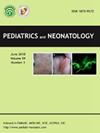音乐和运动疗法可改善注意力缺陷/多动障碍患者的生活质量和注意力以及相关脑电图变化。
IF 2.3
4区 医学
Q2 PEDIATRICS
引用次数: 0
摘要
背景注意缺陷/多动障碍(ADHD)是最常见的神经行为障碍。治疗多动症的方法包括药物治疗和非药物治疗。然而,药物治疗有副作用,如食欲不振、睡眠障碍和头痛。此外,非药物治疗无法有效改善核心症状,而且耗时较长。因此,开发一种无副作用(或副作用较小)的替代性有效治疗方法至关重要。长期以来,音乐疗法一直被用于治疗多种神经系统疾病。虽然听音乐对多动症患者的情绪和认知功能有益,但目前还缺乏关于音乐和运动疗法对多动症儿童影响的研究。方法本研究调查了为期 8 周的音乐和运动干预对 13 名多动症儿童的影响。儿科生活质量量表(PedsQL)用于评估参与者生活质量的变化。康纳斯儿童连续表现测试(K-CPT 2)和斯旺森、诺兰和佩勒姆评分量表(SNAP-IV)用于评估核心症状。对脑电图(EEG)记录进行分析,以确定神经生理学变化。此外,干预后,参加者在 K-CPT 2 的区块 1 和区块 2 测试中的命中反应时间明显减少。脑电图分析表明,某些脑电图通道的阿尔法功率和樋口分形维数增加,而德尔塔功率下降。本文章由计算机程序翻译,如有差异,请以英文原文为准。
Music and movement therapy improves quality of life and attention and associated electroencephalogram changes in patients with attention-deficit/hyperactivity disorder
Background
Attention-deficit/hyperactivity disorder (ADHD) is the most common neurobehavioral disorder. Treatments for ADHD include pharmacological and nonpharmacological therapy. However, pharmacological treatments have side effects such as poor appetite, sleep disturbance, and headache. Moreover, nonpharmacological treatments are not effective in ameliorating core symptoms and are time-consuming. Hence, developing an alternative and effective treatment without (or with fewer) side effects is crucial. Music therapy has long been used to treat numerous neurological diseases. Although listening to music is beneficial for mood and cognitive functions in patients with ADHD, research on the effects of music and movement therapy in children with ADHD is lacking.
Methods
The present study investigated the effects of an 8-week music and movement intervention in 13 children with ADHD. The Pediatric Quality of Life Inventory (PedsQL) was used to evaluate changes in participants' quality of life. Conners’ Kiddie Continuous Performance Test (K-CPT 2) and the Swanson, Nolan, and Pelham rating scale (SNAP-IV) were used to assess core symptoms. Electroencephalogram (EEG) recordings were analyzed to determine neurophysiological changes.
Results
The results revealed that the participants' quality of life increased significantly after the 8-week intervention. Furthermore, the participants' hit reaction times in the block 1 and block 2 tests of K-CPT 2 decreased significantly after the intervention. EEG analysis demonstrated an increase in alpha power and Higuchi's fractal dimension and a decrease in delta power in certain EEG channels.
Conclusion
Our music and movement intervention is a potential alternative and effective tool for ADHD treatment and it can significantly improve patients’ quality of life and attention.
求助全文
通过发布文献求助,成功后即可免费获取论文全文。
去求助
来源期刊

Pediatrics and Neonatology
PEDIATRICS-
CiteScore
3.10
自引率
0.00%
发文量
170
审稿时长
48 days
期刊介绍:
Pediatrics and Neonatology is the official peer-reviewed publication of the Taiwan Pediatric Association and The Society of Neonatology ROC, and is indexed in EMBASE and SCOPUS. Articles on clinical and laboratory research in pediatrics and related fields are eligible for consideration.
 求助内容:
求助内容: 应助结果提醒方式:
应助结果提醒方式:


